April 1 marks the beginning of the Islamic holy month, Ramadan, where Muslims around the world fast from sunrise until sunset for 30 days. For Muslim people, this period is believed to be the time that Prophet Muhammad, peace be upon him, received that divine revelations that led to the Quran. It’s a time of deep spiritual reset, self reflection and relationship building. Ramadan dishes, which are prepared once its dark outside, tend to be hearty, filling, and well seasoned.


7 Delicious and Traditional Ramadan Dishes That You'll Find Around the World
For a month that’s rooted in abstaining from eating for upwards of 15 hours per day, it’s also a month that, perhaps surprisingly, revolves around food: That’s because after the sun goes down, families loosen their belts, and dig into meals that give them the strength to continue with the fast once the sun comes up. The post-daylight meal that takes place during Ramadan is known as iftar.
I grew up in a family where every meal was eaten together around the dinner table. But in my early teens, in between hockey practice and art classes, communal eating took a back seat. Suddenly, eating on-the-go became a regular practice, with Tupperware containers and wrappers littering the passenger side of the car. As the ritual of communal eating faded, so too did my attention to how I was eating.
But every year, Ramadan gives me room for pause. Each sunrise and sunset, as I begin fast and break fast, I’m surrounded by those I love. Through shared meals and sleepy smiles, I’m reminded that beautiful things happen when people gather.
Ramadan is observed by families in every country on Earth, but you’ll of course find that traditions surrounding this holy time are prevalent in countries like Indonesia, Malaysia, Brunei, Iran, Oman, Saudi Arabia, Jordan, Syria, Libya, Algeria, Morocco, Mauritania. And each of these countries has its favorite foods to prepare when families are finally allowed to break their fast. But there are in fact several dishes that are common throughout Ramadan no matter where you’re from. Here are seven dishes that you can find around the Ramadan table.
Hibiscus Tea
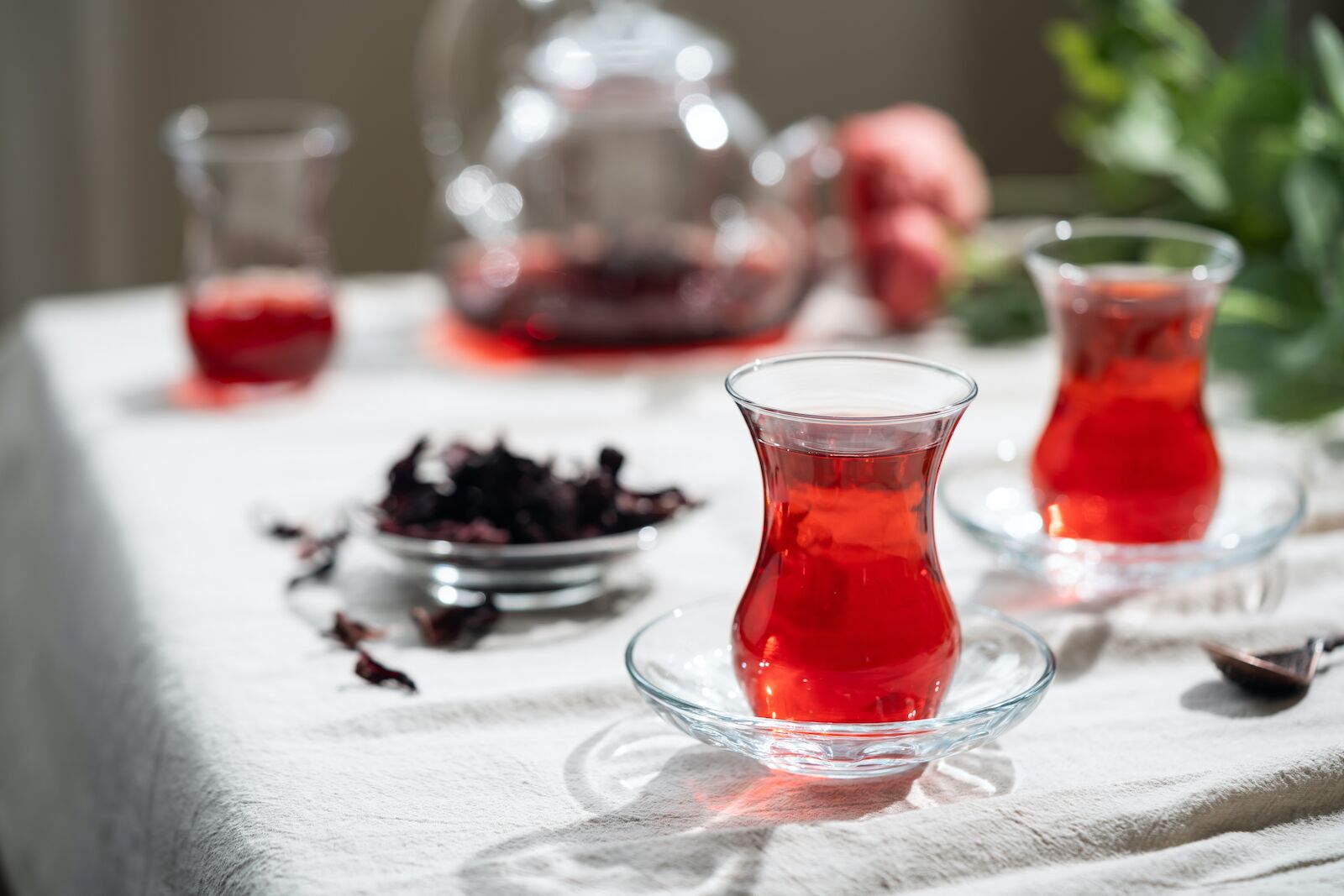
Photo: Goskova Tatiana/Shutterstock
Referred to by many names, including karkade in places like Jordan and Egpyt, hibiscus tea is a nutrient dense beverage that can be served hot or chilled. The tea is packed with antioxidants and known to boost immunity and improve heart health. Many Muslim families only prepare and drink hibiscus tea during Ramadan, perhaps because some folks believe its flavor mimics that of a mulled wine.
Bean pie
Bean pies are more than a Ramadan staple – they are an integral part of Muslim history, particulary in the US. Developed by the Nation of Islam in the 1930’s, the pies are made from cooked and blended navy beans. The texture is similar to custard and the flavor is sweet. Bean pies are perhaps the only Ramadan foods that are original to America. Writer Narjis Nichole Abdul-Majid argues that, “If the African American Muslim experience had a symbolic icon, the bean pie would be it.”
Sambusa
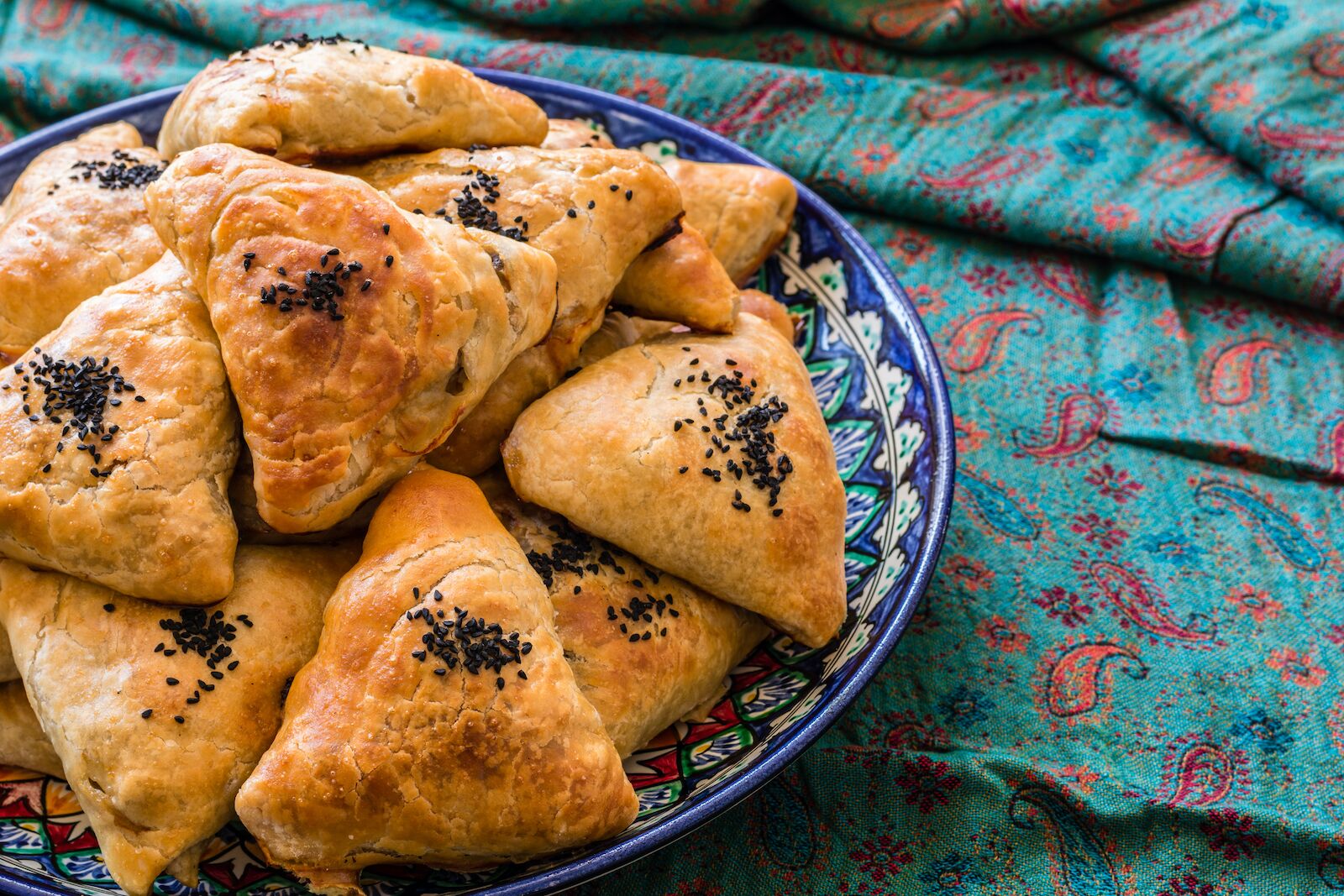
Photo: roman tohtohunov/Shutterstock
Especially popular in Somali cuisine, the sambusa is similar to an Indian samosa: this triangle pastry baked or deep fried, and filled with meat, lentils, vegetables or fish and dipped into chutney.
Dates
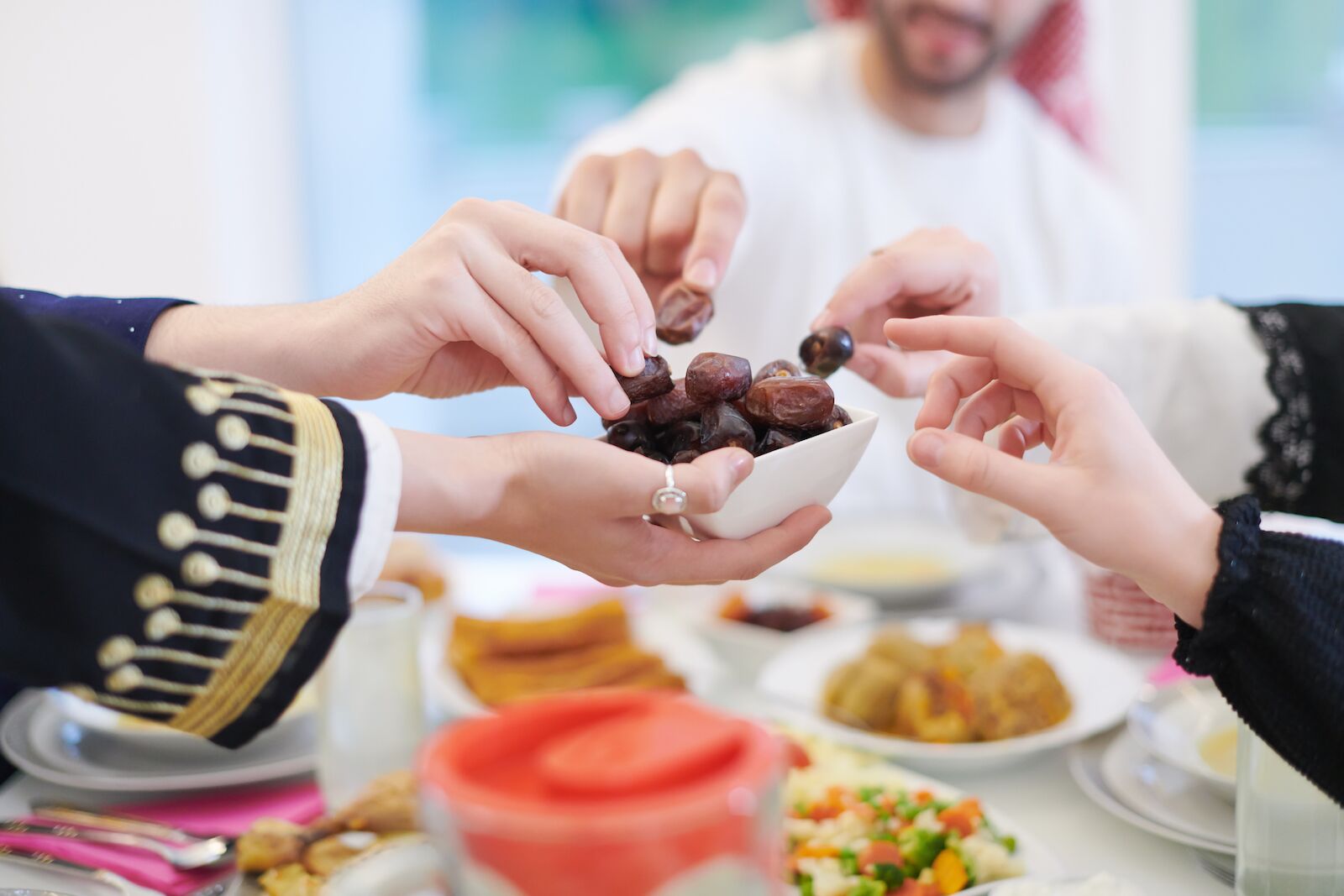
Photo: dotshock/Shutterstock
Muslims break their fasts with dates, and often eat them in odd numbers, as was the tendency of the Prophet Muhammad, peace be upon him. Although I never liked dates when I was younger, they’ve become an integral part of my diet, especially during Ramadan. Dates are high in sugar, potassium, magnesium and are an excellent source of fiber. After a long day of fasting, dates are the perfect starter to help alleviate exhaustion, headaches, and digestion. During Ramadan, dates are often stuffed with almond butter, or cucumbers.
Haleem
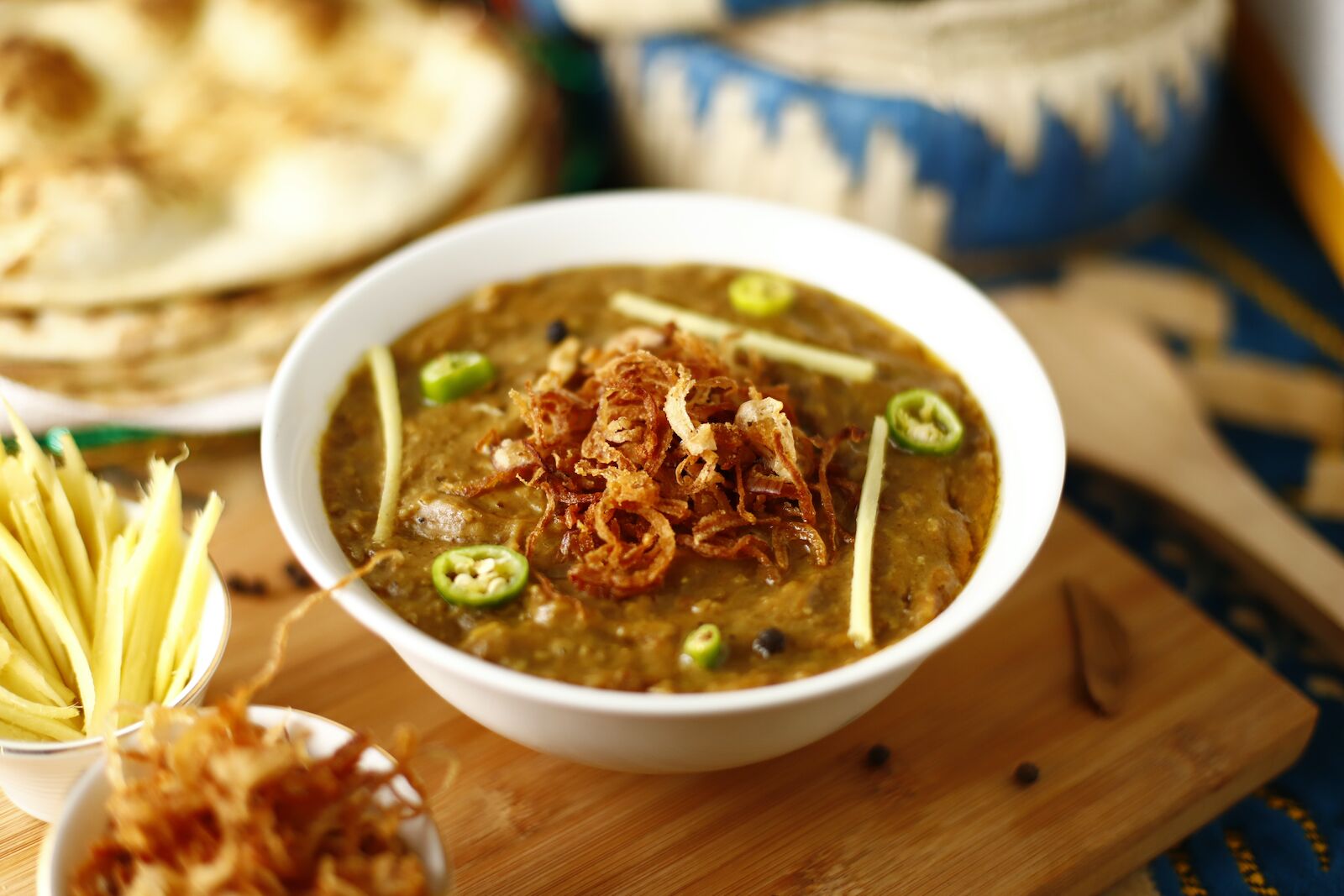
Photo: ahmer shahid/Shutterstock
This filling stew is common throughout South Asia, and it often includes meat like chicken or mutton, lentils, and pounded wheat. Heavily spiced with a blend of cumin, turmeric, cardamom and saffron, it’s rich in calories and contains ingredients that slow digestion, helping you stay fuller and energized for longer.
Tamer Hindi
This beloved drink is a Ramadan staple, and can be found on Muslim tables across the globe, but it’s especially popular in Jordan and Lebanon. Pressed from the juice of a tamarind plant, it’s tart yet sweet.
Shorba
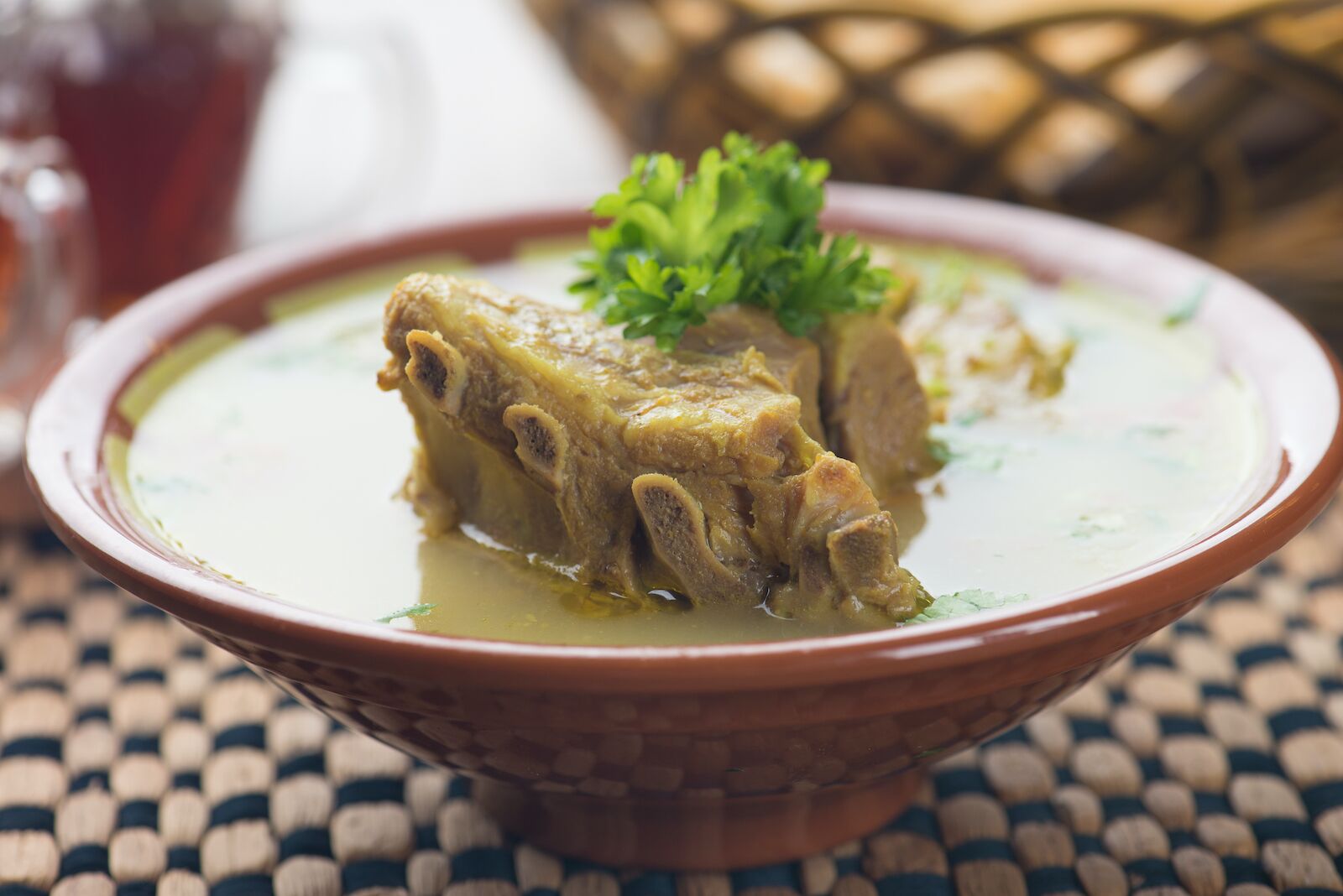
Photo: wong yu liang/Shutterstock
Lentil soup is one of my favorite comfort foods. It’s warm, filling, and always perfectly seasoned with garlic, cumin, and coriander. It’s made with a blend of vegetables, spices, and oats and makes an excellent pre-fast meal. The anti-inflammatory spices in shorba are thought to aid with digestion. The bloggers behind Our Tunisian Table write that this, “satisfying soup is an absolute staple on every Tunisian dinner table for all 30 nights of Ramadan.”